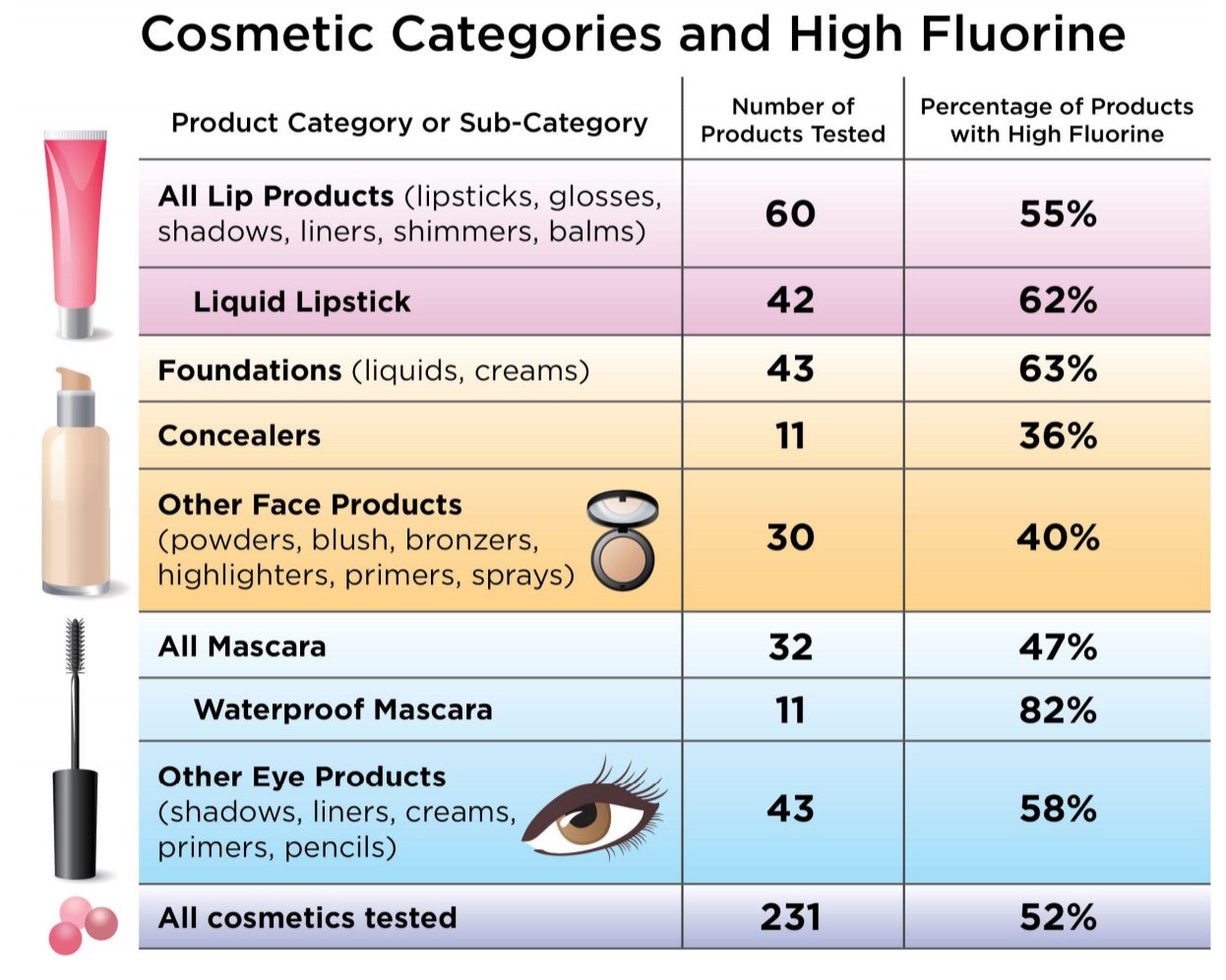“Lipstick wearers may inadvertently eat several pounds of lipstick in their lifetime. But unlike food, chemicals in lipstick and other makeup products are almost entirely unregulated in the U.S. and Canada,” warns Graham Peaslee, senior author of a new study that came out earlier this week. The study found high levels of per- and polyfluoroalkyl substances (PFAS) or “forever” chemicals in most waterproof mascara, liquid lipsticks and foundations tested. On top of that, most of the products with high levels of PFAS didn’t even have it labelled on the ingredient list!
What are PFAS anyways?
PFAS are often found in non-stick, waterproof and grease resistant products (such as Teflon pans and food packaging). PFAS can easily be absorbed into our food and bodies, which is concerning as these chemicals have been linked to a wide range of serious health harms, from cancer to obesity to reproductive problems. PFAS have also been found to be extremely persistent in the environment, which is where their description as “forever” chemicals came from. (A new study also found PFAS in rain water around the Great Lakes basin!)
So, why are PFAS found in makeup?
As seen in the table below, out of the 231 Canadian and American cosmetics tested, more than 52 per cent of them had high levels of fluorine, which suggests the presence of PFAS. Many of the products that contained PFAS were advertised as “waterproof,” “wear-resistant,” or “long-lasting.” Only one of the 17 Canadian products tested had PFAS labelled in the ingredient list. This makes it difficult for Canadian consumers to make informed choices when shopping.

What can the federal government do about PFAS?
Although transparency of toxics in products is needed in order to make informed shopping decisions, fully disclosing all ingredients (including those hidden in fragrances) isn’t the best way to ensure toxics can be avoided by consumers because “toxic-free” products are typically more expensive. The onus shouldn’t be put on people to decode ingredient labels in order to purchase safer products. Banning or controlling toxics is a far more reliable way to protect our health and the environment.
Unfortunately, the Canadian government has a history of tolerating chemicals that are controlled in places such as Europe. This is in part because of outdated methods for chemical risk management, including a two decade old law that is meant to protect our health and environment from toxics and pollution, the Canadian Environmental Protection Act (CEPA).
Recently, the government has shown signs of action:
- They proposed to assess the risks posed by PFAS as a class of chemicals, as opposed to on a one-by-one basis. We need to make sure that this is implemented in a meaningful way that doesn’t fail due to chemical industry lobbying and pushback.
- They are considering mandatory labelling of all ingredients in certain consumer products.
- And lastly, they introduced Bill C-28, a bill to modernize CEPA, which includes recognizing the right to a healthy environment and protecting vulnerable communities from toxics. The first draft of the bill is a good step, but it needs to be improved and strengthened. If the government does not move Bill C-28 forward promptly, with necessary improvements, we may not see effective protections from toxics for many more years. Take action today and tell the federal government to improve and pass Bill C-28 immediately!










